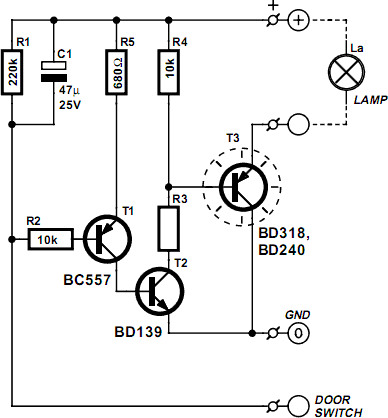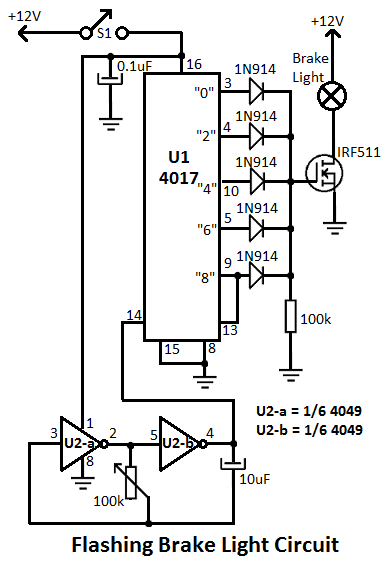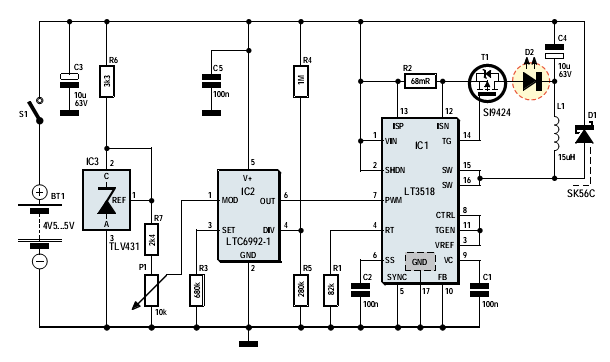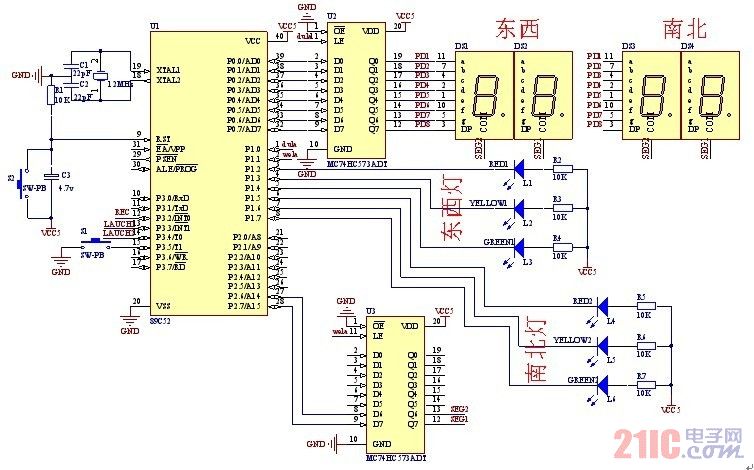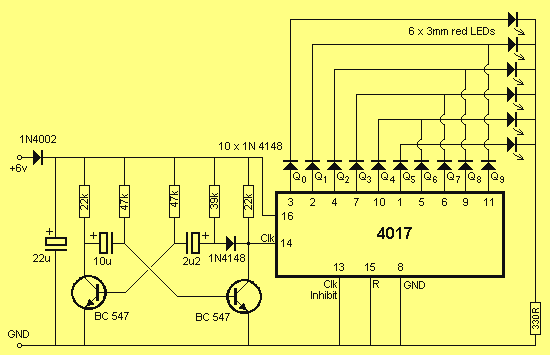
LED operates as light sensor
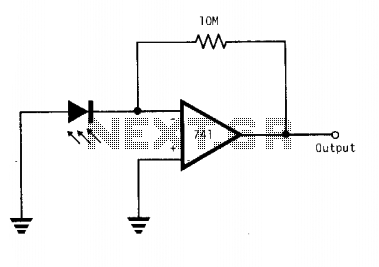
A simple 741 amplifier is utilized as a current-to-voltage converter, with an LED serving as the current source. The output voltage is proportional to the incident light. The junction is biased solely by the difference between the output summing node junction potential and ground, thereby preventing reverse breakdown. The current generated by photons is equivalent to the short-circuit current of the junction, which has a linear relationship with the incident light. The sensor necessitates a specific level of incident illumination, which varies based on the opacity of the LED package.
The described circuit employs a 741 operational amplifier configured as a current-to-voltage converter, which is a common application in photodetection systems. The LED acts as a light-sensitive current source, generating a photocurrent proportional to the intensity of incident light. This photocurrent is fed into the inverting input of the operational amplifier, which converts the current signal into a corresponding voltage output.
The operational amplifier's feedback mechanism ensures that the output voltage remains stable and proportional to the input current. The biasing of the junction is achieved through the relationship between the output voltage and ground, which is critical in maintaining the integrity of the circuit by avoiding reverse breakdown conditions. This characteristic is essential for protecting the LED and the operational amplifier from potential damage due to excessive reverse voltage.
The short-circuit current generated by the LED in response to light is a key parameter, as it directly influences the output voltage. The linear relationship between the generated photocurrent and the intensity of incident light allows for precise measurements and control in various applications, such as light sensing, optical communication, and environmental monitoring.
It is important to note that the performance of the sensor is contingent upon the level of incident illumination, which is affected by the opacity of the LED package. This factor must be considered during the design phase to ensure optimal sensitivity and response time. The circuit can be further enhanced by incorporating additional components, such as filters or amplifiers, to improve signal quality and reduce noise, thereby increasing the overall performance of the light detection system.Using a simple 741 amplifier connected as a current-to-voltage converter with the LED as the current source, the voltage at the output is proportional to incident light. The junction is Q biased only by the difference between the output summing node junction potential and ground, preventing the possibility of reverse breakdown.
The photon-generated current equals the short-circuit current of the junction, which is linearly related to incident light. The sensor requires a level of incident illumination that depends on the degree of opacity of the LED Fig. 51-5 package.
The described circuit employs a 741 operational amplifier configured as a current-to-voltage converter, which is a common application in photodetection systems. The LED acts as a light-sensitive current source, generating a photocurrent proportional to the intensity of incident light. This photocurrent is fed into the inverting input of the operational amplifier, which converts the current signal into a corresponding voltage output.
The operational amplifier's feedback mechanism ensures that the output voltage remains stable and proportional to the input current. The biasing of the junction is achieved through the relationship between the output voltage and ground, which is critical in maintaining the integrity of the circuit by avoiding reverse breakdown conditions. This characteristic is essential for protecting the LED and the operational amplifier from potential damage due to excessive reverse voltage.
The short-circuit current generated by the LED in response to light is a key parameter, as it directly influences the output voltage. The linear relationship between the generated photocurrent and the intensity of incident light allows for precise measurements and control in various applications, such as light sensing, optical communication, and environmental monitoring.
It is important to note that the performance of the sensor is contingent upon the level of incident illumination, which is affected by the opacity of the LED package. This factor must be considered during the design phase to ensure optimal sensitivity and response time. The circuit can be further enhanced by incorporating additional components, such as filters or amplifiers, to improve signal quality and reduce noise, thereby increasing the overall performance of the light detection system.Using a simple 741 amplifier connected as a current-to-voltage converter with the LED as the current source, the voltage at the output is proportional to incident light. The junction is Q biased only by the difference between the output summing node junction potential and ground, preventing the possibility of reverse breakdown.
The photon-generated current equals the short-circuit current of the junction, which is linearly related to incident light. The sensor requires a level of incident illumination that depends on the degree of opacity of the LED Fig. 51-5 package.
